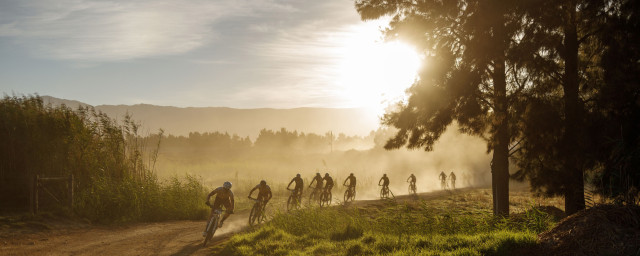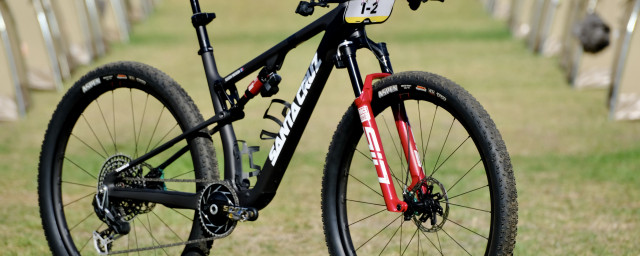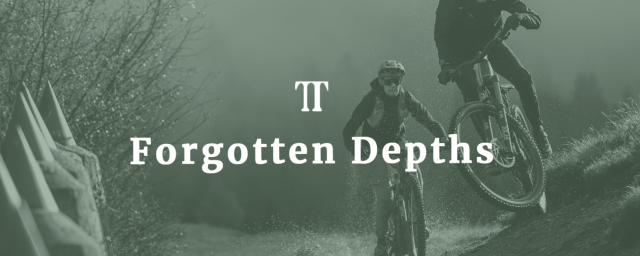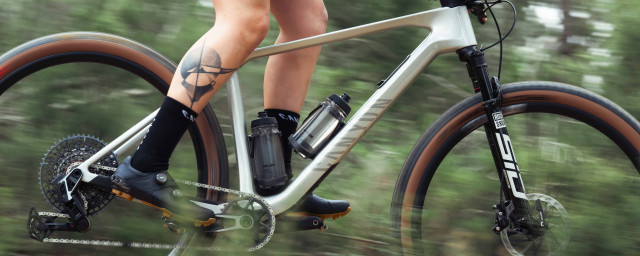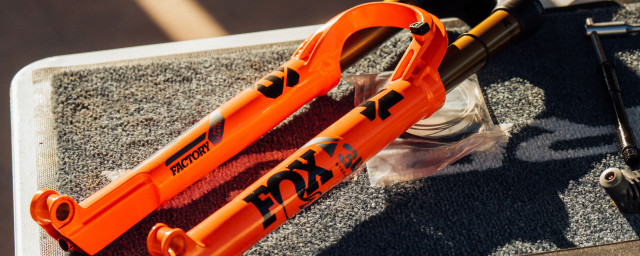Best full face MTB helmets 2025 - top-tier head protection for testing your limits
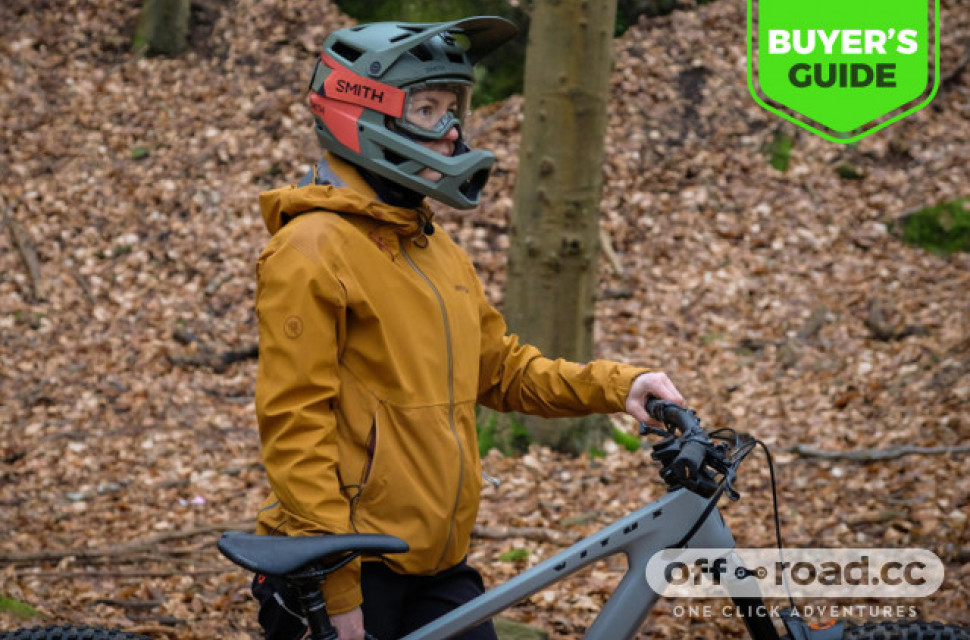
Full-face helmets have come a long way since the early downhill mountain biking options. Modern designs, materials and safety features have made the best full-face MTB helmets even better - they're now lighter, more breathable and have better comfort than before.
Rolling the safety dice before dropping in on gravity-riding trails is not recommended - crashes are inevitable when riding at the speeds associated with modern downhill and enduro mountain biking. The full-face helmet is significantly influenced by motorcycle helmet design, where speeds are much greater than those seen in mountain biking. The chin bar combined with more substantial coverage of the head offers unsurpassed protection on even the most gnarly tracks and trails. This is why wearing a full-face helmet is mandatory during racing and gravity-orientated days at bike parks.
There's a surprising amount to consider before buying a full-face MTB helmet especially as they don't come cheap. Our list of tested full-face helmets encompasses everything from pricing and performance to safety and comfort. Scroll to the bottom if you wish to learn more about how to choose the best full-face MTB helmets.
Smith Mainline
£275 - £280
The Mainline is Smiths' first entry into the full-face helmet market. While it is expensive, it can definitely earn its keep – it’s supremely comfortable and it fits the bill for an enduro-focused full face almost perfectly. It has both the MIPS and Koroyd rotational-impact protection systems for impressive safety, though the Koroyd does somewhat restrict airflow.
The first thing you notice about the Mainline is how excellently comfortable it is. It’s got a pretty big field of view, too, with the chin bar and visor being of minimal obstruction. On the subject of the chin bar, it’s very well-ventilated with a big open mouthpiece. You can easily thread the hose of your hydration pack through it and it doesn’t hold on to any exhaled air, so it never feels claustrophobic.
While it's pricey, Smith Optics has done an excellent job with the Mainline. It’s thoughtfully ergonomic and super comfortable. The only real downsides are that it would be breezier if the Koroyd wasn’t there – if potentially less protective and that some riders might prefer a Fidlock closure to the classic and more fiddly D-rings.
- Read our full Smith Mainline helmet review for more on its features and how it fared on the test
- Buy now: Smith Optics Mainline Mips Full Face MTB Cycling Helmet from Tredz for £249.00
Troy Lee Designs Stage
£300
Troy Lee Design's Stage helmet is a breezy full-face lid that offers excellent protection and comfort while also looking pretty sharp. It's still not as cool to be in as an open lid on a hot day, but for racing or riding that requires more protection, it's the next best thing, assuming your pockets are deep enough.
The Stage is one of the latest generations of full-face lids that are designed to be pedalled in, rather than being cut out for full-on gravity madness. That means it's peppered with a lot more ventilation - 25 vents in all - with the non-removable chin guard being especially minimalist and a wide face opening to direct air when you're giving it your all on an enduro race stage or descending in the Alps.
As well as the aforementioned ventilation you can expect premium features such as a MIPS liner, dual-density foam construction, magnetic Fidlock chin strap fastening with styling and looks that are hard to beat.
All in all, it's a very well-made helmet that promises a lot of protection, delivers excellent comfort and about as much ventilation as you could hope for from a full-face lid. If you race enduros or visit big mountains - or are just a bit cautious about smashing your face in general - then it's a hefty investment, but one you'll likely be very pleased with.
- Read our review of Troy Lee Design's Stage helmet to learn more about how it performed during testing.
100% Trajecta
£230
The 100% Trajecta features a multi-point adjustable visor, and a metal D-ring closure and is certified to downhill full-face standards, despite the 24 large vents that make this considerably more pleasant to pedal in than a regular full-face. It's even got an own-brand version of MIPS beneath its antimicrobial liner.
The Trajecta from 100% is an enduro-style full-face helmet that offers downhill-certified protection in a lightweight and breezy package. Although it's pricey, the rotational impact protection system is flimsy and it's best for round-shaped heads. If you’re looking for a helmet that offers meaningful protection while staying comfy, light and cool enough for all-day rides, the 100% Trajecta confidently ticks all the boxes. Just do what you can to try before you buy.
- Our full review of the 100% Trajecta helmet covers all the specifications and performance merits in detail.
- Buy now: 100% Trajecta MTB Helmet from Wiggle for £183.20
IXS Trigger FF
£200
The IXS Trigger FF is a full-face MTB helmet that aims to combine open-face breathability with full-face protection. It’s certainly light enough for all-day riding, but its open-face style straps aren’t the most comfortable and the shell is fairly large.
The Trigger FF is built using a 'unibody' in-moulded EPS, which fuses everything together so there are no weak points or seams. The chin guard is internally braced by the (also fused-in) skeleton that IXS call X-Frame. Keeping the lid secure is the ever-popular Fidlock closure, paired with a flexible open-face style retention system that has three levels of vertical adjustment as well as the usual twisty tightening function.
If you’re looking for full face protection that’s equally as happy during an enduro as it is on a chilled mooch with your mates, the IXS Trigger FF ticks all the boxes. It’s light and comfortable enough to keep you happy yet well-protected.
- Make sure you read our comprehensive review of the IXS Trigger FF helmet for all the details.
- Buy now: IXS Trigger Full Face MTB Helmet from Chain Reaction Cycles for £119.99
Specialized Gambit
£275
The Specialized Gambit is a helmet designed to be the lightest DH-certified full-face model on the market. As such, Specialized has given it a carbon-fibre shell that’s combined with a polycarbonate backing and five pieces of targeted density foam to keep the weight low.
The Gambit is packed with premium features such as the brand’s Integrated Fit System that’s said to accommodate variations in head shape and occipital base, alongside the MIPS SL cradle to minimise rotational impacts. Specialized has made use of a Computational Fluid Dynamic design to help the helmet suck in as much air as possible and is kitted with special attention to the internal channelling and the brow vents. If you're looking for a super lightweight full-face helmet with DH certification, open-face-like adjustment, and mega airflow, the Gambit firmly fits the bill.
- Read the complete review of the Specialized Gambit helmet.
- Buy now: Specialized Gambit MIPS Full Face MTB Helmet from Sigma Sports for £220
How to choose the best full-face MTB helmet
Whether you are riding or racing downhill or enduro trails, head protection is non-negotiable. Hitting technical trails with jumps, gaps, rocks, roots and steep negative gradients is reason enough to acquire one of the best full-face MTB helmets. Modern options are now lighter and cooler and are no longer designed exclusively for downhill mountain biking but for enduro stages, too. They also offer added peace of mind when you are whipping about on hefty e-MTBs. Ultimately the type of helmet will be determined by how frequently you intend to push your riding limits while riding demanding technical trails and terrain.
We recommend that you try before you buy, as there is no point in having a helmet packed with technology and modern safety features if it doesn't fit your head properly.
What are the benefits of a full-face MTB helmet?
The number one benefit of a full-face MTB helmet is the level of protection on offer. They will protect more of your head than a traditional cycling helmet, as well as shield your face and chin from low- or high-speed impacts.
This level of protection does come at a cost but you can't put a price on your well-being let alone your life - purchasing one of the best full-face MTB helmets is a non-negotiable if downhill mountain biking is your thing. Yes, they are heavier and don't offer the same amount of ventilation as open-face or trail helmets but you'll undoubtedly benefit from the confidence of the all-around protection on offer.
What is the difference between a half-shell and a full-face helmet?
As the name suggests the full-face helmet offers riders complete head protection with a chin guard that is designed to keep your entire head in one piece. As the name suggests, they take their cues from the motorcycle helmet.
The alternative option to the lightweight and well-vented full-face helmets on offer today are half-shell and convertible helmets. Half-shell helmets offer increased coverage over traditional XC helmets, they wrap further down the back of the head and behind the ears. This means they are a lighter option but lack the chin bar and complete protection.
The convertible helmet is the happy medium between the two. They are a versatile option that grants riders all the protection benefits of a full face but also the choice to remove the chin guard from the helmet aiding your puffing and panting on extended ascents to the top of the mountain or the next enduro stage start. The downside to incorporating the removable chin guard is an increase in overall weight.
Do full-face helmets have good ventilation?
Modern helmet designs have evolved with the uptake and popularity of enduro racing, where riders need to get cranking on climbs mid-stage. As a general rule, helmets that offer larger vents and better airflow will have reduced structural surface material and more opportunity to catch trail debris - so it is a trade-off. Generally, you can expect a full face to run considerably warmer than a half shell or trail lid. This becomes a tricky compromise to balance if your summers include trips to warmer climates on some of the world's roughest and most technically demanding terrain.
What are the safety features of a full-face MTB helmet?
One of the most notable benefits is the ability to use or store full-size goggles, which offer riders a wide and uninterrupted view of the trail. Some brands have even integrated neck brace systems.
Look out for certifications such as EN1078, and ASTM F1952-15, the former being the only compulsory European standard for all bike helmets and the latter being an American standard. Buy a certified lid and you can be sure that you're well protected.
Speaking of protection, Systems such as MIPS, WaveCel and Leatt's Turbine technology are all designed to reduce sharp rotational forces to the head and reduce concussions and other brain traumas by letting the helmet move independently of your head. Comfort is key and a personal thing, but finding a full-face helmet that fits you perfectly has never been easier as the best full-face MTB helmets now boast helmet retention systems that have been common in XC and trail-type lids for years.
Then, of course, there are the cases of adjustable or breakaway visors that come away from the main helmet in a crash to reduce the chance of neck injuries. There are also extra cheek pads, beacons and crash sensors and even chips that ping your details to the emergency services. Some manufacturers have gone further with additional safety considerations on their modern helmets with sections of removable pads inside the chin guard to enable easier removal of an injured rider in an emergency.
Manufacturers have even incorporated camera mounts on helmets to tuck them out of the way underneath visors to reduce the risk of them snagging on trees or digging into the ground in the event of a crash which helps mitigate neck injuries.
Do I need to use goggles with a full-face helmet?
Goggles will offer unsurpassed protection from debris and dust. They offer better coverage than even the best cycling glasses and most helmet designs have been ergonomically shaped to fit goggles inside the open aperture. The best full-face MTB helmets allow you to lock in your goggle strap with a clip or a simple groove in the shell. This holds your goggles in place even through the roughest rock gardens.










